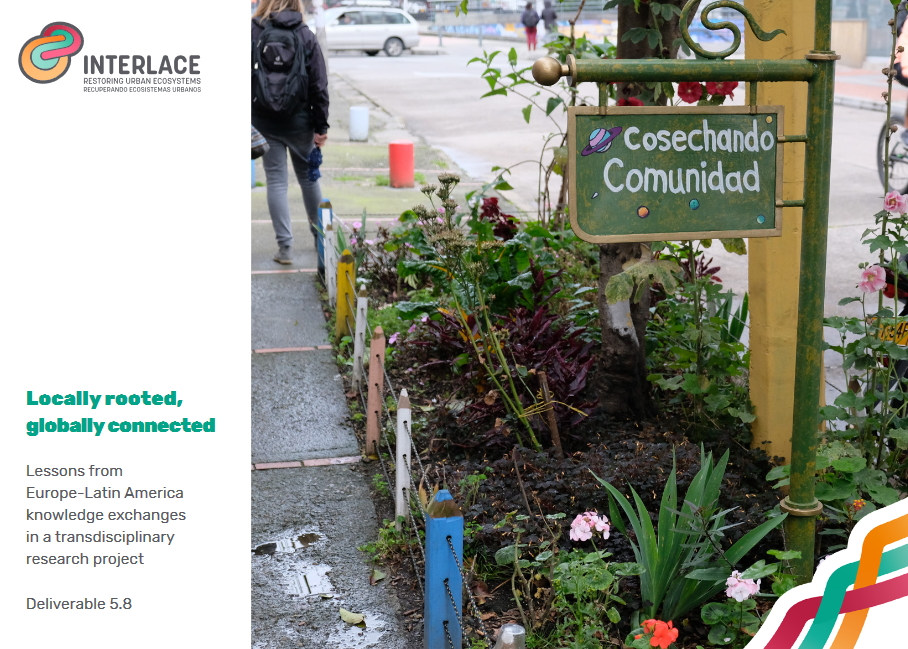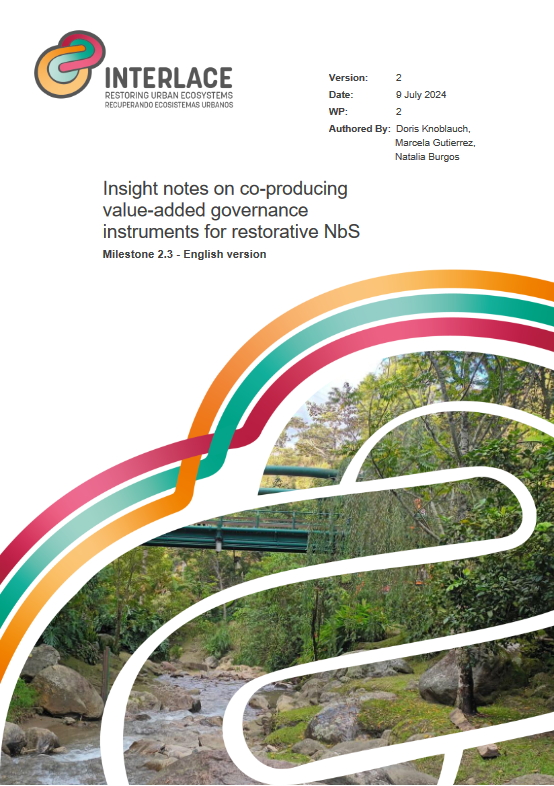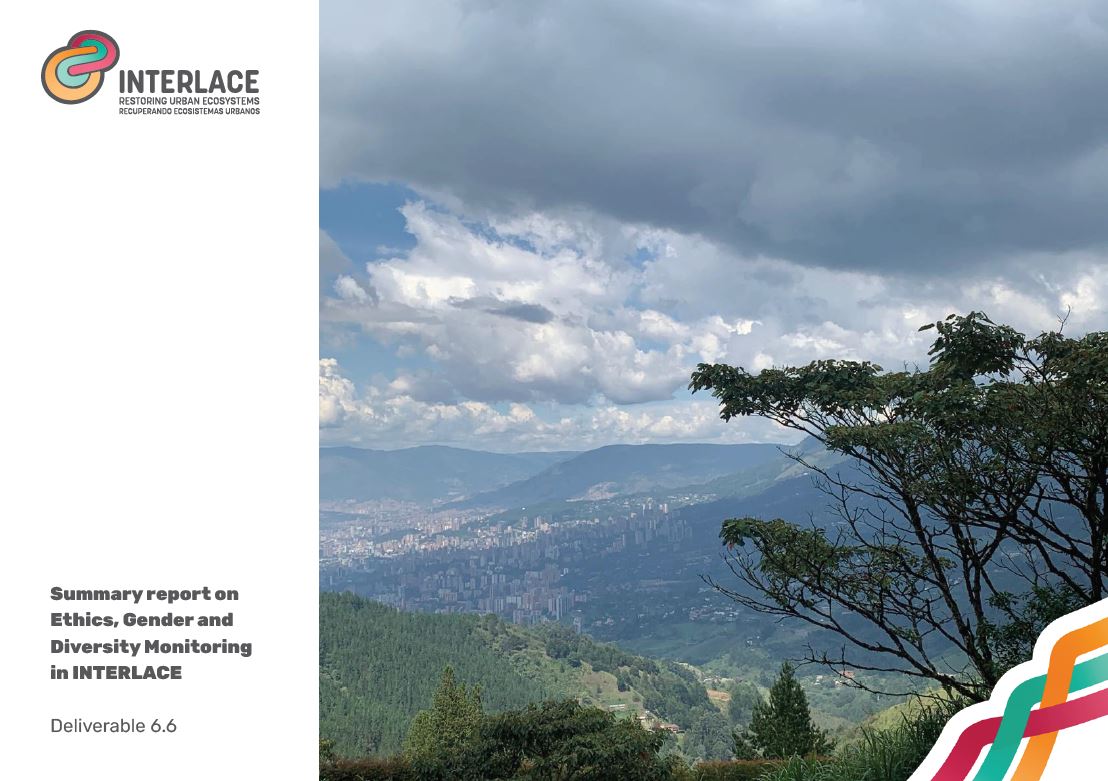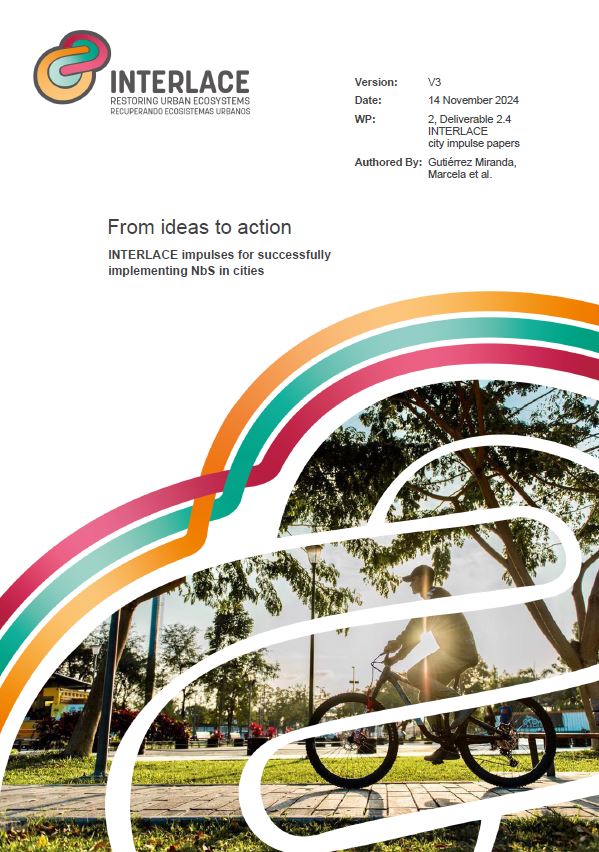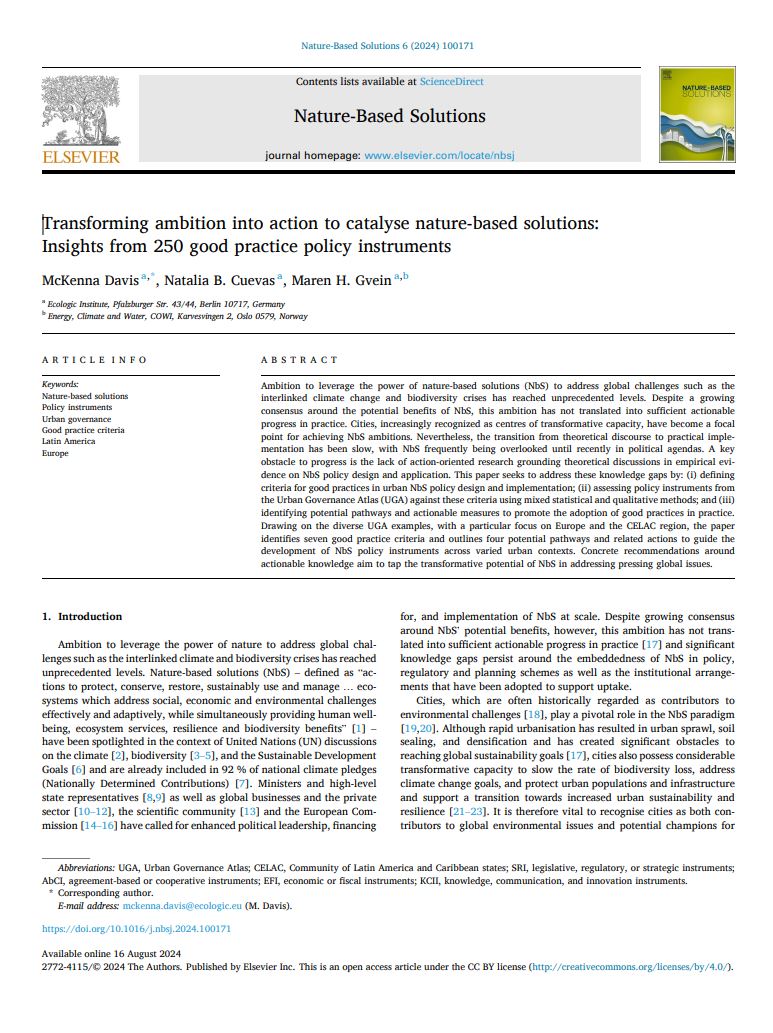
© 2024 Elsevier
Transforming Ambition into Action to Catalyse Nature-based Solutions
Insights from 250 good practice policy instruments
- Publication
- Citation
Davis, M.; Cuevas, N.B; Gvein, M.H. (2024). Transforming ambition into action to catalyse nature-based solutions: Insights from 250 good practice policy instruments, Nature-Based Solutions, 6, 100171. https://doi.org/10.1016/j.nbsj.2024.100171
Despite a growing consensus around the potential benefits of nature-based solutions (NbS) to address diverse global challenges, ambition has not translated into sufficient actionable progress in practice. Cities, increasingly recognized as centres of transformative capacity, have become a focal point for achieving NbS ambitions. Nevertheless, the transition from theoretical discourse to practical implementation has been slow, with NbS frequently being overlooked until recently in political agendas. A key obstacle is the lack of action-oriented research grounding theoretical discussions in empirical evidence on NbS policy design and application. Studies showcasing specific policy instruments being used in practice to support NbS uptake remain rare and no study has carried out a systematic, large sample assessment of implemented practices – until now. We address these knowledge gaps in our article by:
- defining criteria for good practices in urban NbS policy design and implementation;
- assessing policy instruments from the Urban Governance Atlas (UGA) against these criteria using mixed statistical and qualitative methods; and
- identifying potential pathways and actionable measures to promote the adoption of good practices in practice.
Learning from the Urban Governance Atlas
The Urban Governance Atlas, which serves as the sample for this research, comprises 250 policy instruments supporting NbS. The instruments stem from 41 countries, with a focus on Europe and the Community of Latin American and Caribbean States (CELAC), in line with the geographic focus of the INTERLACE project within which the UGA was developed. Four types of policy instruments are included: legislative, regulatory and strategic; knowledge, communication and innovation; economic and fiscal; and agreement-based or cooperative. Information on the governance, financing, and results of each instrument as well as overarching success factors and lessons learned across these categories are presented in the UGA: Welcome to the Urban Governance Atlas | Interlace Hub (interlace-hub.com).
Key scientific contributions:
- Although the concept of ‘good practices’ is acknowledged in the context of NbS policy, a consolidated framework was lacking to highlight the attributes of the instruments themselves. A typology of seven good practice criteria has been developed, including: inclusive; effective; support multifunctional NbS; sustainable in the long-term; locally appropriate; upscalable/replicable; and innovative. These criteria represent a first step towards a more comprehensive approach to NbS instrument design and evaluation, offering a flexible framework that can be tailored to different contexts and needs and serve as a common language in research and policy discourse and practice.
- An analysis of the most frequently occurring criteria pairs help to identify potential areas for optimising NbS policy instrument design and implementation, resulting in four pathways and corresponding actions to support the fulfilment of good practice criteria in diverse local contexts. Each pathway is illustrated by a number of EU and CELAC policy instrument cases to ground the discussion in real world examples.
- The inclusion of the CELAC region alongside European and other cases represents a significant advance, filling an important gap in current NbS research and offering a more inclusive perspective on potential opportunities and effective strategies that can be applied in the policy landscape.
- The findings are not intended to be regarded as definitive solutions applicable only to specific regions, nor as 'all or nothing' criteria. Rather, we see them as a catalyst for further discussion and action, with a view to optimising the delivery of NbS ambitions through more informed policy decisions.




